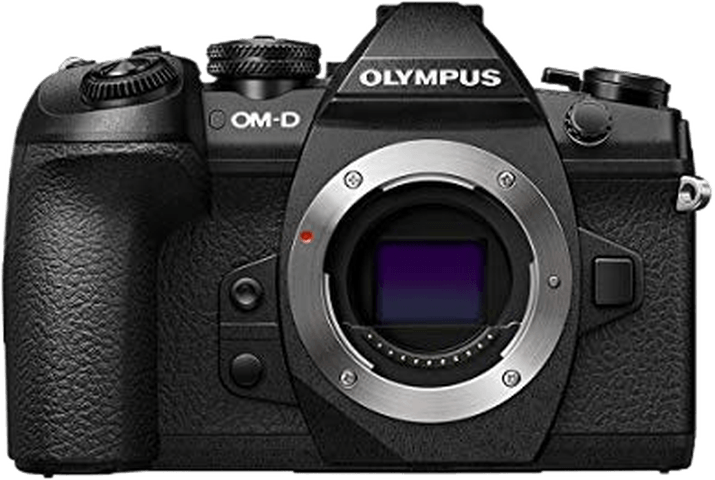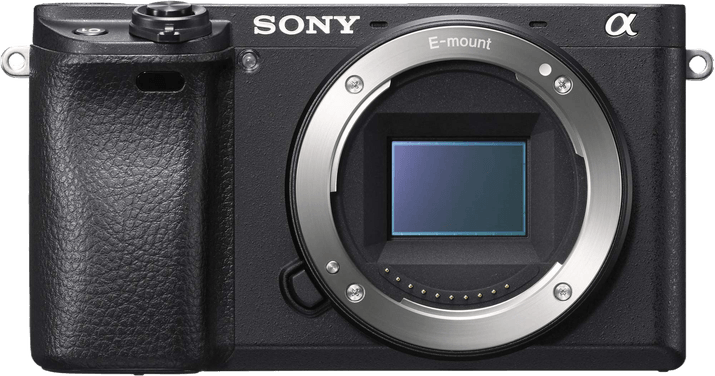Olympus OM-D E-M1 Mark II vs Sony a6500 Comparison
Olympus OM-D E-M1 Mark II

Sony a6500

The Sony a6500 takes the lead with a score of 72/100, while the Olympus OM-D E-M1 Mark II trails behind with a score of 68/100. Both cameras are mirrorless and were released in 2016. The Sony a6500 has a launch price of $1400, while the Olympus OM-D E-M1 Mark II is priced at $2000.
The Olympus OM-D E-M1 Mark II excels in size, measuring 134 x 91 x 67mm and weighing 574g. However, the Sony a6500 is more compact and lightweight, with dimensions of 120 x 67 x 53mm and a weight of 453g. This makes the Sony a6500 more portable and convenient for on-the-go photography.
While the Olympus OM-D E-M1 Mark II offers a larger camera body, it falls short in terms of overall performance and price. The Sony a6500 not only scores higher but also provides a more affordable option for photographers. The compact size and lower price point make the Sony a6500 a more attractive choice for those looking to invest in a mirrorless camera.
Olympus OM-D E-M1 Mark II vs Sony a6500 Overview and Optics
The Sony a6500 outperforms the Olympus OM-D E-M1 Mark II in optics, scoring 74/100 compared to the Olympus’ 68/100. Both cameras share some common specifications, such as having a CMOS sensor, an image stabilization feature, and being equipped with a capable processor – the Bionz X for the Sony and the TruePic VIII for the Olympus.
The Sony a6500’s higher score is due to its superior specifications, such as its 24.2-megapixel count compared to the Olympus’ 20.4 megapixels, which allows for more detailed images. Additionally, the Sony a6500 has a higher DXOMARK score of 85 for its sensor, compared to the Olympus’ score of 80, indicating better overall image quality. The Sony a6500 also features an APS-C sensor size and a 3:2 aspect ratio, which contribute to its advantage in optics.
On the other hand, the Olympus OM-D E-M1 Mark II has its strengths, particularly in shooting speed, as it can capture images at a rapid 60 frames per second, while the Sony a6500 is limited to 11 frames per second. This makes the Olympus a better choice for capturing fast-moving subjects or action shots.
To sum up, the Sony a6500 excels in image quality and sensor performance, making it the winner in optics. However, the Olympus OM-D E-M1 Mark II offers a significantly faster shooting speed, which may be beneficial for specific photography needs. Ultimately, the choice between these two cameras depends on the individual’s priorities and desired outcomes.
Olympus OM-D E-M1 Mark II vs Sony a6500 Video Performance
The Sony a6500 outperforms the Olympus OM-D E-M1 Mark II in video capabilities, scoring 77/100 compared to the latter’s 70/100. Both cameras share the common feature of 4K maximum video resolution, allowing for high-quality video recording. However, the differences in their video specifications contribute to the Sony a6500’s higher score.
The Olympus OM-D E-M1 Mark II has a maximum video dimension of 4096 x 2160, which is slightly larger than the Sony a6500’s 3840 x 2160. This difference may seem advantageous for the Olympus camera, but it is not significant enough to overshadow the benefits of the Sony a6500. The winning camera, the Sony a6500, boasts a maximum video frame rate of 120fps, which is substantially higher than the Olympus OM-D E-M1 Mark II’s 24fps. This higher frame rate allows for smoother, more detailed video capturing, particularly when recording fast-moving subjects or action scenes.
One advantage the Olympus OM-D E-M1 Mark II holds over the Sony a6500 is its built-in time-lapse functionality. This feature enables users to create stunning time-lapse videos without the need for additional equipment or software. The Sony a6500, however, lacks this built-in feature.
Despite the Olympus OM-D E-M1 Mark II’s slightly larger video dimensions and built-in time-lapse functionality, the Sony a6500’s significantly higher video frame rate and overall video score make it the superior choice for videographers seeking top-quality video performance.
Olympus OM-D E-M1 Mark II vs Sony a6500 Features and Benefits
The Sony a6500 outshines the Olympus OM-D E-M1 Mark II in features, scoring 81/100 compared to the Olympus’ 70/100. Both cameras share common specifications, such as a 3-inch screen size, touchscreens, flip screens, lack of GPS, and WIFI capabilities. However, the Sony a6500 surpasses the Olympus in certain aspects, while the Olympus has its advantages as well.
The Sony a6500’s screen resolution is 921,600 dots, which is greater than the Olympus’ 1,037,000 dots. The higher resolution results in a clearer and sharper display, enhancing the user’s experience. Additionally, the Sony a6500 possesses Bluetooth connectivity, a feature absent in the Olympus OM-D E-M1 Mark II. Bluetooth enables seamless connection to external devices, providing convenience and improved functionality.
On the other hand, the Olympus OM-D E-M1 Mark II offers a higher screen resolution. This results in a more detailed display, allowing users to review their images with enhanced clarity. However, this advantage is not enough to overcome the Sony a6500’s higher feature score and additional Bluetooth capability.
In comparing the two cameras, it is evident that the Sony a6500 holds the upper hand in terms of features. With a higher score, better screen resolution, and Bluetooth connectivity, the a6500 provides more value to users. While the Olympus OM-D E-M1 Mark II has a slight edge in screen resolution, it falls short in other aspects, making the Sony a6500 the superior choice.
Olympus OM-D E-M1 Mark II vs Sony a6500 Storage and Battery
The Olympus OM-D E-M1 Mark II outperforms the Sony a6500 in storage and battery with a score of 57/100 compared to 21/100. Both cameras accept SD, SDHC, and SDXC memory cards. However, the Olympus has two memory card slots, offering more storage flexibility, while the Sony has only one slot but also accepts Memory Stick Pro Duo cards.
In terms of battery life, the Olympus lasts for 440 shots with its BLH-1 battery, while the Sony manages 350 shots using the NP-FW50 battery. Neither camera supports USB charging.
The Olympus clearly surpasses the Sony in storage capacity and battery life, making it a more reliable choice for extended photography sessions. The Sony a6500’s advantage lies in its compatibility with Memory Stick Pro Duo cards, which may be useful for some users.
Taking these factors into account, the Olympus OM-D E-M1 Mark II proves to be the superior choice for photographers prioritizing storage and battery performance. The Sony a6500 remains a viable option for those seeking Memory Stick Pro Duo compatibility.
Olympus OM-D E-M1 Mark II vs Sony a6500 Alternatives
Still not sure which camera to buy? Try these trending camera comparisons to inspire you:
